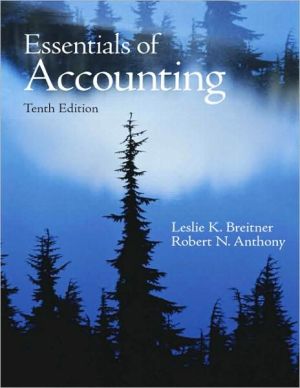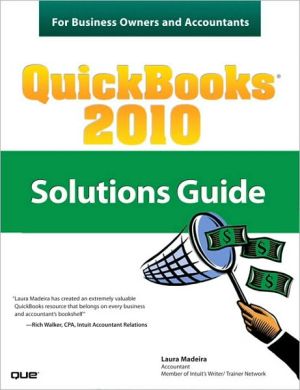The Roi of Human Capital: Measuring the Economic Value of Employee Performance
The mission of quantifying the value each employee brings to your organization is a crucial task, and not one to be taken lightly. But how do you accurately determine the contributions of your people and use that knowledge to improve your company’s overall performance?\ Now in a brand new edition, The ROI of Human Capital provides you with a complete, reliable method for measuring the contributions of your people to corporate profit. Fully updated with new metrics, this long trusted resource...
Search in google:
The mission of quantifying the value each employee brings to your organization is a crucial task, and not one to be taken lightly. But how do you accurately determine the contributions of your people and use that knowledge to improve your company’s overall performance? Now in a brand new edition, The ROI of Human Capital provides you with a complete, reliable method for measuring the contributions of your people to corporate profit. Fully updated with new metrics, this long trusted resource offers a rare blend of management expertise and quantitative measurements, showing you how to gauge human costs and productivity at three critical levels: 1. Organizational. Macro-level data is the launching site of any ROI assessment system. Examples and proven formulas illustrate how to combine quantitative and perceptual measures into a corporate human capital scorecard. The book introduces you to the five key indexes of change: cost, time, quantity, quality, and human reactions. 2. Functional. This is the process arena, which typically sprawls across business units and is therefore difficult to manage and measure. A detailed five-point approach shows how to “tame” processes and add value to them, specifically in terms of service, quality, and productivity. 3. Human Capital Management. You’ll discover how to build a performance matrix that enhances the fundamental HR activities—planning, acquiring, supporting, developing, and retaining—by connecting them to the five indexes of change. Written by Jac Fitz-enz, the man widely regarded as the inventor of human performance benchmarking, The ROI of Human Capital, which won the Society for Human Resource Management Book of the Year Award in 2001, brilliantly shows how to integrate these levels into a single, end to end system of human capital valuation reporting. It also helps you weigh the potential effects of such practices as HR restructuring, outsourcing, using contingent workers, and merging with or acquiring another company. And, not least, you will learn to create futures scorecards that can improve your ability to see over the horizon and far beyond your competition. Throughout, Fitz-enz enlivens his wealth of hard data with useful examples and a conversational, easy-to-read style. The second edition contains new material on topics including corporate outsourcing, developments in behavioral science, and advances in trending and predicting that have dramatically changed the way organizations measure the bottom-line effect of employee performance. Utterly up-to-date, this is the go to resource for organizations performing the essential task of measuring the value of their people. Jac Fitz-enz, Ph.D., is the acknowledged father of human capital strategy and measurement. He began his breakthrough research in these areas in the 1970s and has since trained more than 85,000 managers in 45 countries. From 1980 to 2002 Dr. Fitz-enz was founder and chairman of Saratoga Institute, renowned for its benchmark data on effective HR practices. Currently, he is the founder and CEO of Human Capital Source, developers of Predictive Management—HCM:21®. His other books include The 8 Practices of Exceptional Companies; How to Measure Human Resource Management; Benchmarking Staff Performance; A New Vision for Human Resources (coauthored with Jack Phillips); and Human Value Management, honored as Book of the Year in 1991 by the Society for Human Resource Management. Dr. Fitz-enz lives in San Jose, California.
CHAPTER 1: Human Leverage\ ‘‘We can have facts without thinking but we cannot have\ thinking without facts.’’\ —JOHN DEWEY\ The Shift\ No longer is management of the human resources department\ a human resources issue. When personnel and training\ came into being during the 1930s, it was in response to\ the growing strength of organized labor. The main contribution\ of personnel and industrial relations was to deal with\ that incursion. After World War II, as corporations expanded,\ there was a need for someone to handle the administrative\ issues around employees. Personnel got the job. By\ the late 1960s, it was becoming clear that there were more\ complex challenges, so personnel changed its name to\ human resources. Today, the game is human capital management.\ Conceptually, this is recognition that people are\ the bedrock of the organization as we stumble into the Intelligence\ Age. The fundamental question has become, how do\ we improve the return on our investment in human capital?\ We find ourselves in a world where yesterday is a distant\ memory and tomorrow is an uncertain dream. The only reality\ is now. Yet, by taking the long view of any issue, we\ better understand not only where we have come from and\ where we are now but perhaps where we might be headed.\ Consider how a technology such as telecommunications has\ evolved. It started as a box on the wall with a crank and a\ gizmo to talk into. Some people believed that it was a fad\ and that they didn’t need one. Today, it is a gizmo stuck in\ your ear or a pad hung somewhere on your body and don’t\ try to tell your teenagers that they don’t need one.\ So what does this have to do with managing organizations\ and especially with understanding how people—that\ is, human capital—need to be addressed within our organizations?\ Here is where it goes three-dimensional. The issue\ is not only the structure of organizations and the people\ within them. Now the external entity, the customer, has entered\ the organization in a new and as yet not clearly understood\ way. Whether we recognize the fact or not, the\ customer is as much a part of our companies as are our\ physical and human assets. The three types of capital—\ structural, human, and relational—are rapidly merging into\ just structural and human with what was the external relations\ (the customer) now imbedded in everything we do internally.\ Let me try to explain it by paralleling it with the evolution\ of electronic technology. Computers became a reality with\ the production of ENIAC, which was the first truly workable,\ large-scale computer. By large, I mean room size.\ ENIAC was born in 1945 as a mass of vacuum tubes that\ truly took up the space of a room. Twenty years later, IBM\ came out with the System/360 that brought computing into\ the business world in a somewhat user-friendly way. Two\ decades later, minicomputers were common and the micro-\ computer appeared. The first portable computer weighed\ more than 20 pounds. Today, laptops weigh less than 5\ pounds. BlackBerrys and similar devices weigh only 5\ ounces and provide more computing power than ENIAC. So\ what? Stay with me, there is an end and a point to this\ journey.\ As the computer and lately the telephone evolved and\ merged capabilities, the critical challenges also advanced\ from hardware to software to services. The product capability\ has grown to the point where the customer and the product\ are virtually inseparable. Today’s telephone/computer is\ no longer in a room, on our desk, or in a purse or briefcase.\ It is attached to our ear. Already that gizmo is taking simple\ switching voice commands. Tomorrow it will do our computing\ verbally as we walk, drive, or sit on our patio. Arguments\ over any topic from who won the Stanley Cup in 1948\ to where was da Vinci when he painted the Mona Lisa to\ what was Tonto’s pet’s name will be settled without lifting a\ finger.\ Ten years ago, I told people at PeopleSoft that they\ needed to move toward services as the next natural evolutionary\ step. They told me to get lost. Lou Gerstner saw the\ future and had the power to shift IBM toward service. In\ 2007, over 60 percent of IBM revenues came from services.\ The reason that the customer is now part of our organization\ is that we no longer sell a product or provide a service.\ We design, sell, and service a customer experience. We are\ stuck in the customer’s ear, literally and figuratively. No\ matter what our product, because of the customer’s emerging\ capabilities and the expectations that are coming with\ them, we are selling experiences.\ Steve Berkowitz, former CEO of Ask.com and later senior\ vice president of Microsoft’s online business group, hit it\ squarely in words that are paraphrased here:\ We have to deliver the basics but that isn’t going to get us to\ the top. Customers go where their emotions take them. We\ have to give the customer the richest experience they want\ NOW. In order to do that, I say we have to live 24/7 with the\ customer.
1 Human leverage 12 How to measure human capital's contribution to enterprise goals 333 How to measure human capital's impact on processes 664 How to measure human resources' value added 1065 End-to-end human capital value reports 1446 Human capital analytics: the leading edge of measurement 1657 Predictive analytics: leading indicators and intangible metrics 1928 How to measure and value improvement initiatives results 2109 Outsourcing: a new operating model? 25210 How to change the game 27211 Eleven principles, seven skills, and five metrics 291Index 301
\ From the Publisher“In fact, this is a scholarly tome well worth reading by more than just the HR crowd… Solid business wisdom that allows for humanity and humor.”\ --Booklist\ “Essential reading for professionals, this book culminates years of quantitative and qualitative research, providing a breakthrough methodology for measuring the bottom-line impact of employee performance… This well-written and authoritative guide is highly recommended for university and professional collections.”\ --Choice\ "The ROI of Human Capital is an ambitious venture into the world of employee performance measurement and improvement in economic value terms… a roadmap for fundamental examination, assessment and strengthening of multi-faceted human performance.”\ --Canadian HR Reporter\ “Fitz-enz brilliantly summarizes the key points of the basic measurement system. These brief comments can only begin to suggest the scope and depth of his eloquent and compelling analysis of an immensely complicated subject.”\ --American Chamber of Commerce Executives\ “An important new business book… The ROI of Human Capital will serve as an excellent reference and guidebook for HR professionals and business leaders, especially CEOs and CFOs, who need to understand how HR contributes to their bottom line. I can serve as a roadmap for HR professionals who want to plan their organizational strategy in a way that will be embraced by the executive team. This work will be invaluable as a framework for executive dialog on HR issues.”\ --HR Magazine\ \ \ \ \ \ GetAbstract.com...is absorbing and a pleasure to read.\ \ \ HR Magazine…an important new business book….The ROI of Human Capital will serve as an excellent reference and guidebook for HR professionals and business leaders, especially CEOs and CFOs, who need to understand how HR contributes to their bottom line. It can serve as a roadmap for HR professionals who want to plan their organizational strategy in a way that will be embraced by the executive team. This work will be invaluable as a framework for executive dialog on HR issues.\ \








